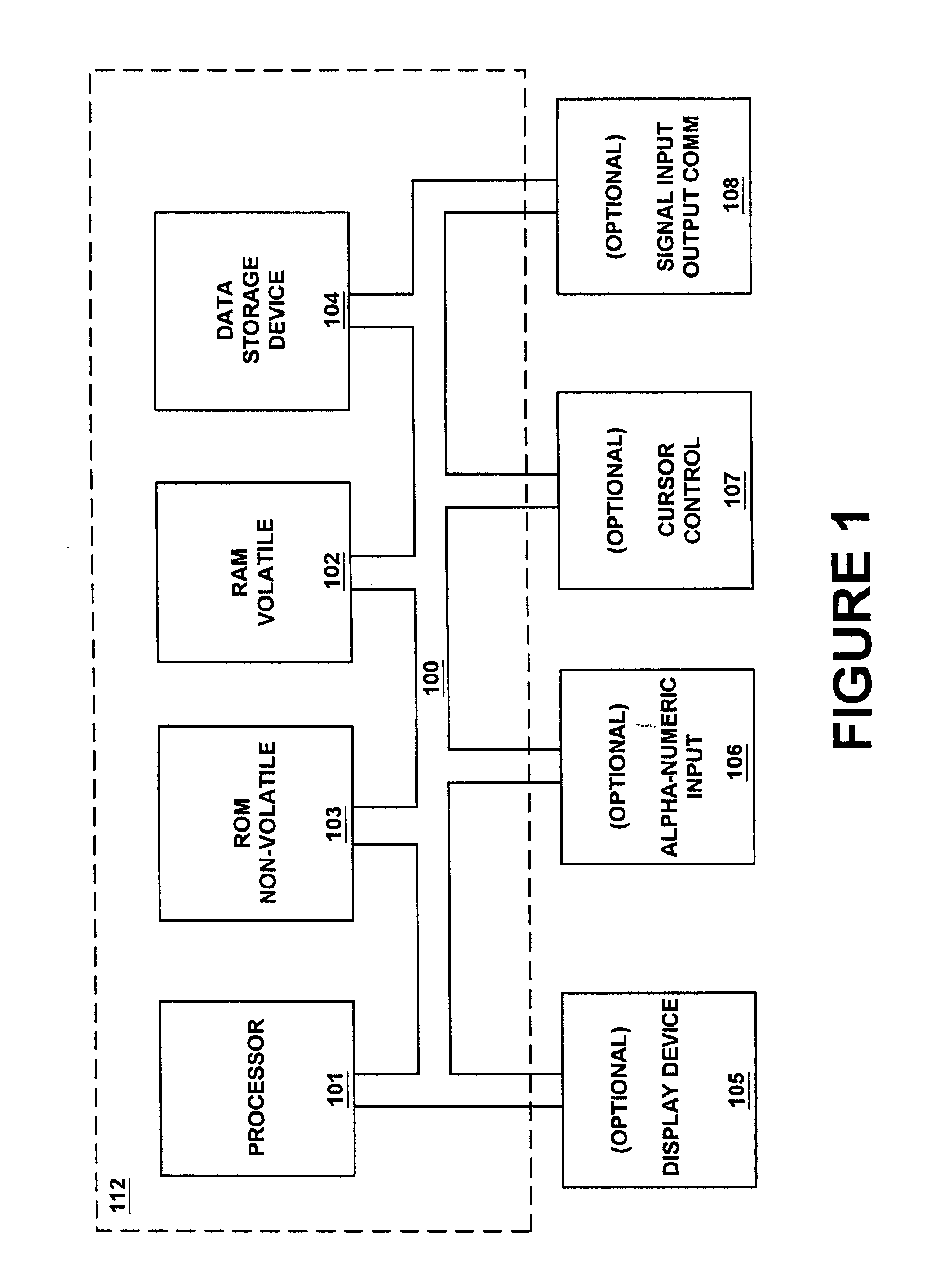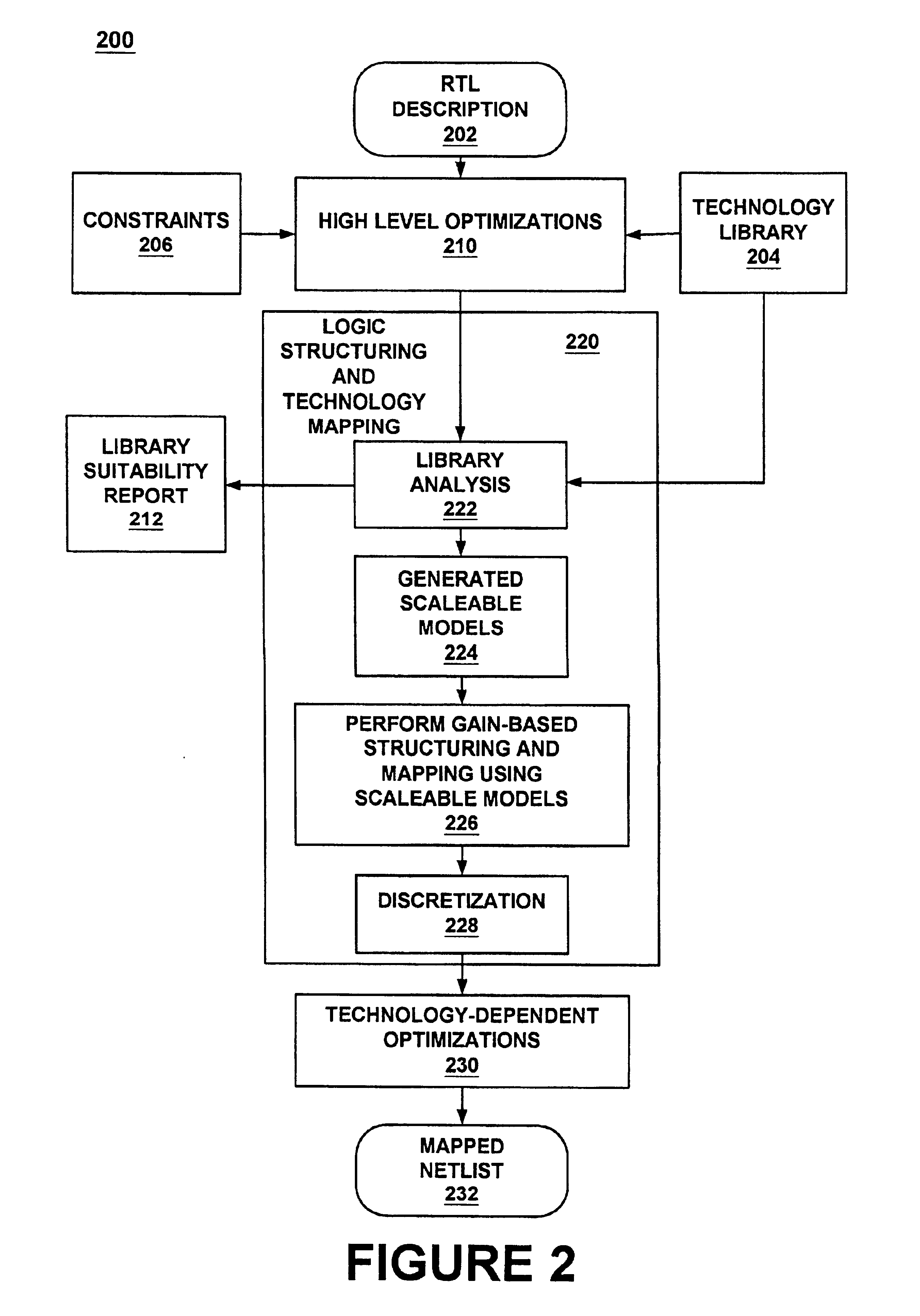Non-linear, gain-based modeling of circuit delay for an electronic design automation system
a gain-based, non-linear technology, applied in the direction of cad circuit design, program control, instruments, etc., can solve the problems of complex modern electronic circuits, large design volume, and disadvantage of cell delay modeling processes, output load-based nldms, while providing delay values, and other problems
- Summary
- Abstract
- Description
- Claims
- Application Information
AI Technical Summary
Benefits of technology
Problems solved by technology
Method used
Image
Examples
Embodiment Construction
[0048]In the following detailed description of the present invention, a non-linear, gain-based modeling of delay using a scalable cell model, numerous specific details are set forth in order to provide a thorough understanding of the present invention. However, it will be recognized by one skilled in the art that the present invention may be practiced without these specific details or with equivalents thereof. In other instances, well known methods, procedures, components, and circuits have not been described in detail as not to unnecessarily obscure aspects of the present invention.
Cases Incorporated by Reference
[0049]The following United States co-pending patent applications are incorporated herein by reference: 1) application entitled, “Evaluation of a Technology Library for Use in an Electronic Design Automation System that Converts the Technology Library into Non-Linear, Gain-Based Models for Estimating Circuit Delay,” by M. Iyer and A. Kapoor, Ser. No. 09 / 451,467, filed Nov. 3...
PUM
 Login to View More
Login to View More Abstract
Description
Claims
Application Information
 Login to View More
Login to View More - R&D
- Intellectual Property
- Life Sciences
- Materials
- Tech Scout
- Unparalleled Data Quality
- Higher Quality Content
- 60% Fewer Hallucinations
Browse by: Latest US Patents, China's latest patents, Technical Efficacy Thesaurus, Application Domain, Technology Topic, Popular Technical Reports.
© 2025 PatSnap. All rights reserved.Legal|Privacy policy|Modern Slavery Act Transparency Statement|Sitemap|About US| Contact US: help@patsnap.com



